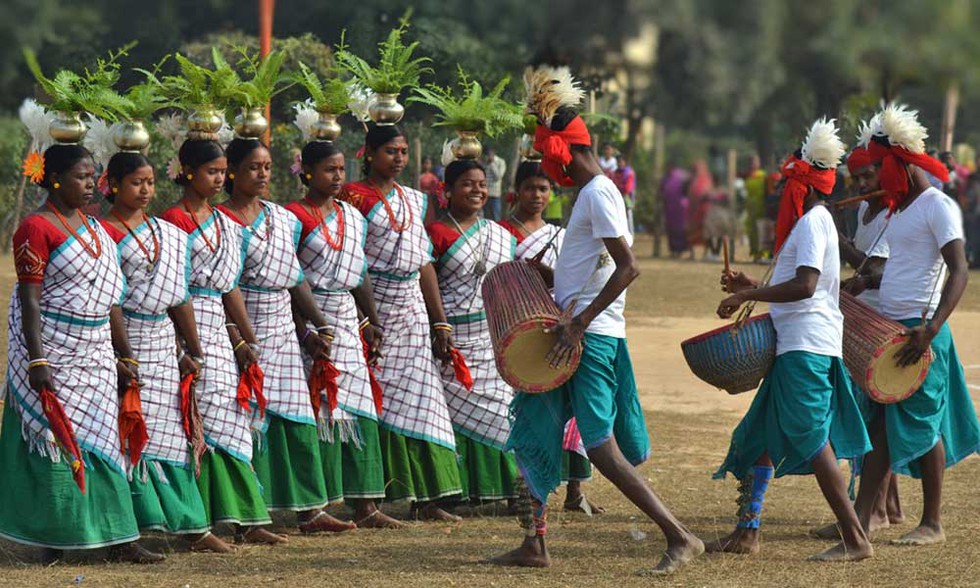About Santhal Tribal Community:
- Santhals are the third largest scheduled tribe community in India after Gonds and Bhils.
- Their greatest concentration is in the states of Bihar, Jharkhand, West Bengal, and Orissa, in the eastern part of the country.
- Language:
- Their language is Santhali, a dialect of Kherwari, a Munda (Austroasiatic) language.
- Santhali, written in OI-Chiki script, is recognised as one of the scheduled languages in the Eighth Schedule to the Constitution.
- The Santhals were a nomadic stock before they chose to settle on the Chotanagpur plateau.
- By the end of the 18th century, they had concentrated in the Santhal Parganas of Jharkhand (earlier Bihar). From there, they migrated to Odisha and West Bengal.
- Religion: They are nature worshippers and could be seen paying obeisance at Jaher (sacred groves) in their villages.
- Their traditional dress includes dhoti and gamuchha for men and a short-check saree, usually blue and green, for women, who generally put on tattoos.
- Various forms of marriage are accepted in Santhal society, including elopement, widow remarriage, levirate, forced (rare), and the one in which a man is made to marry the woman he has impregnated.
- Divorce is not a taboo in Santhal society. Either of the couple could divorce the other.
- Occupation:
- Most Santhals are agriculturists, depending on their farmlands or forests.
- Seasonal forest collection is one of the important sources of their subsidiary income.
- Dance (enej) and music (sereng) are integral parts of the Santal life.
- Their homes, called Olah, have a particular three-colour pattern on the outer walls. The bottom portion is painted with black soil, the middle with white, and the upper with red.
- Santhal Rebellion (1855-56):
- The Santhal uprising, one of the most noted events of revolt against the British Raj, took place in 1855 and 1857.
- This was India’s first major peasant uprising fueled by the implementation of the Permanent Land Settlement in 1793.
- It was led by Sido and Kanhu and covered the regions of Bihar.
